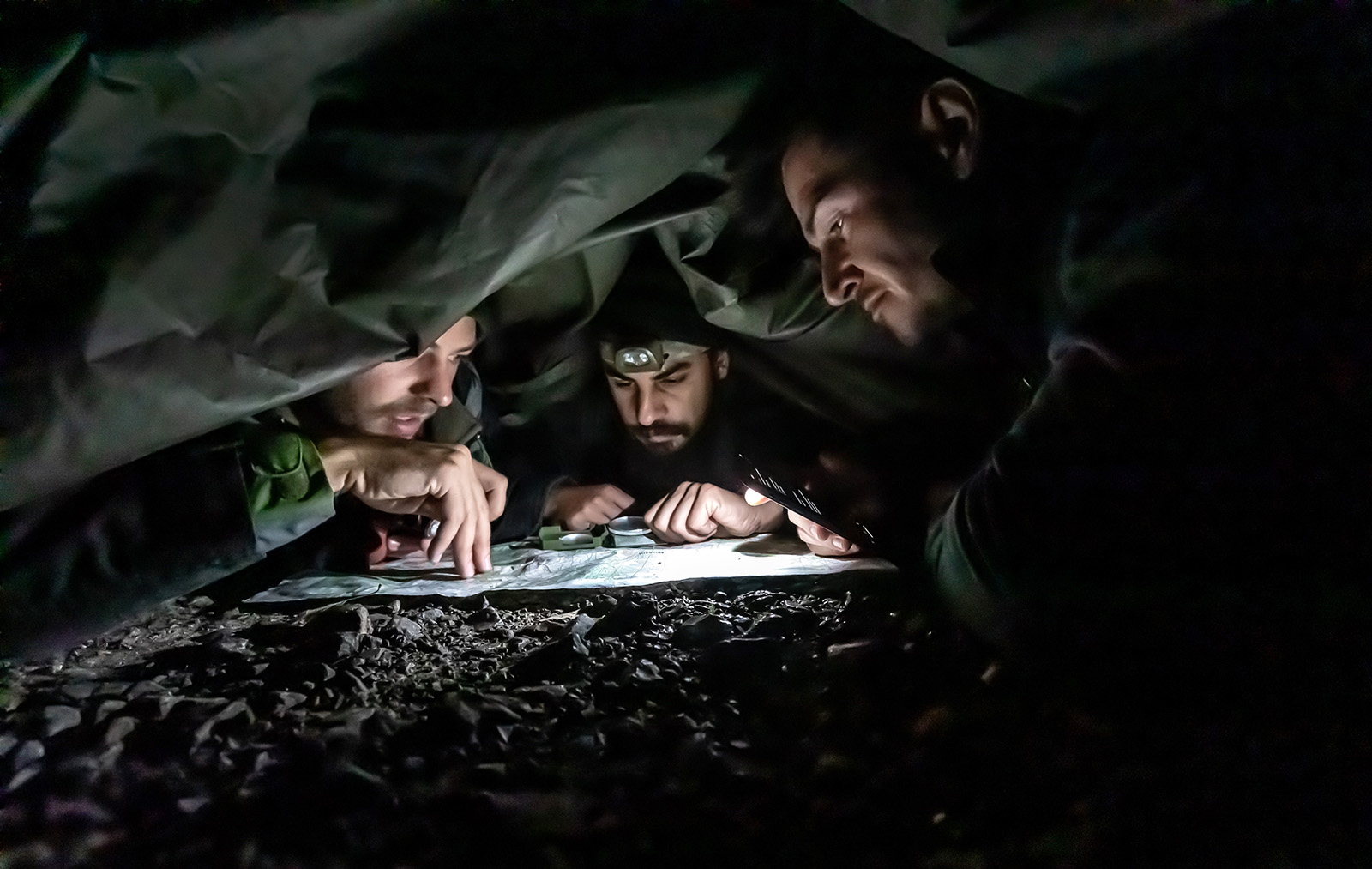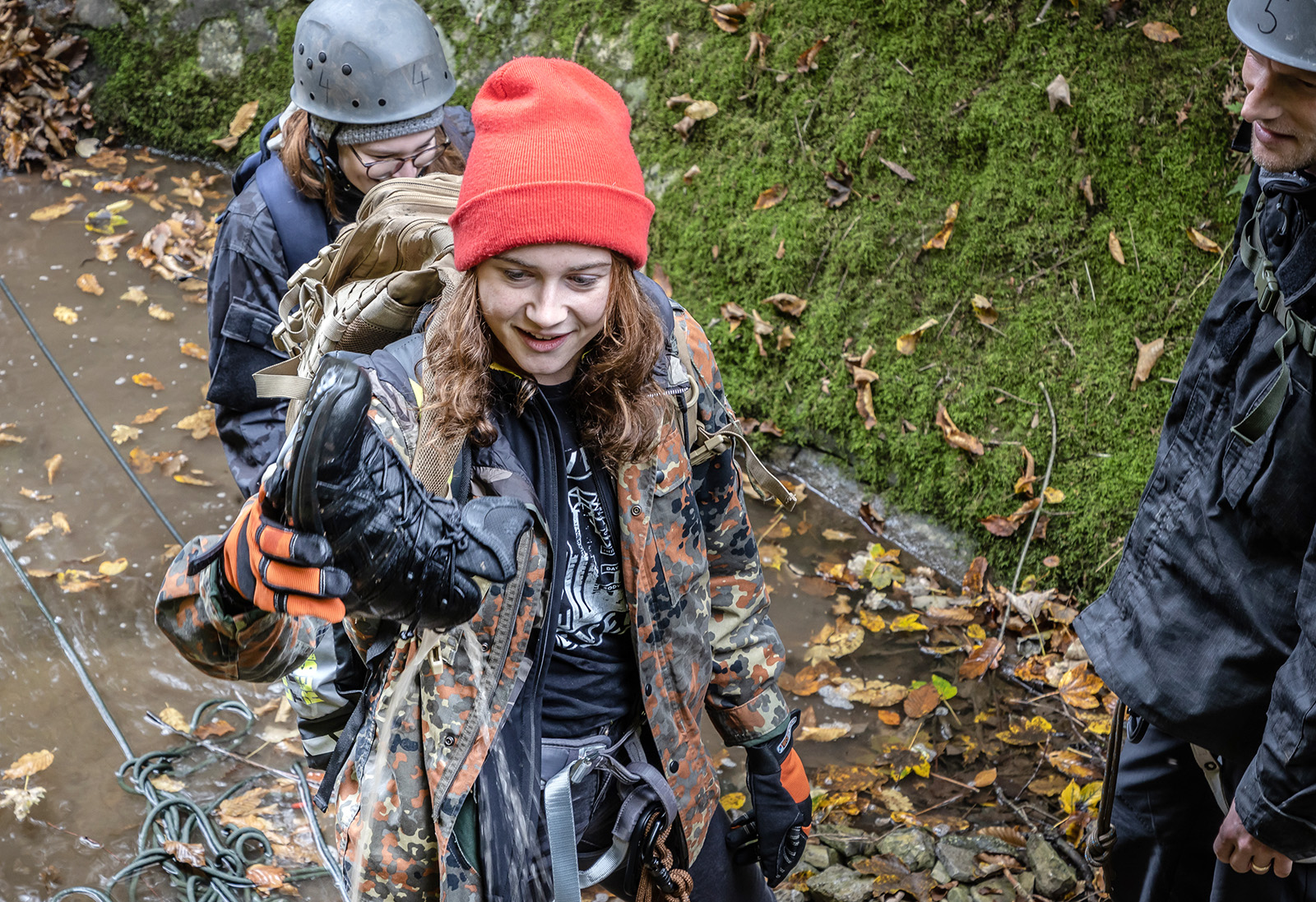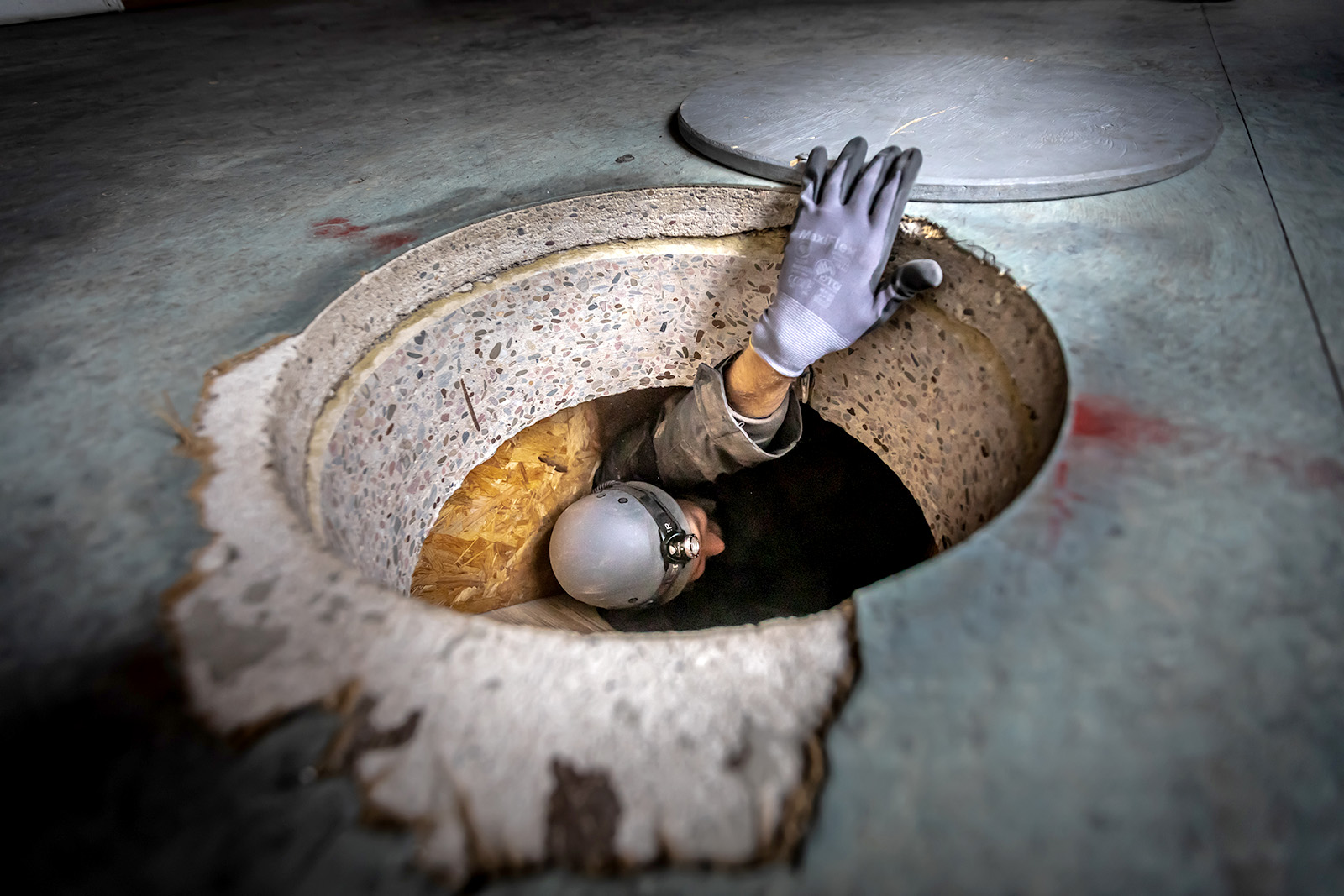There’s nothing quite like being woken by alarm sirens wailing through your quarters at 3.20 a.m. and a megaphone sounding the command to march off into the cold, dark night. Mosbach in October: a training ground with every facility needed to turn shoe development theory into tough operational reality. It’s all set for the shoe developers at HAIX to test out their products themselves – under the operating conditions they were designed for.



The night is black: you can barely see your own hand in front of your eyes, let alone where to put your next step. The mission is the ‘Recovery of a crashed helicopter crew’. The first two kilometres run along pitch-dark forest trails and dewy meadow paths. Every now and then the red light of a headlamp flashes for orientation. The rest is darkness. “Light would give us away immediately in real operations,” says Chief Instructor T., a professional with experience from countless security-related operations all over the world. He is leading the two-day “HAIX Boot Camp” for the Bavarian shoe manufacturer’s research and development department.
Three people from the group lie on the inhospitable ground under a blackout rain cover. Headlamps shine down on deployment locations on a topographic map. There is no GPS: just a compass, map and coordinates. It’s wet. It’s cold. The terrain can only be guessed at. By now, a small addendum from the event’s agenda has crept back into the collective memory: “Take plenty of changes of clothing that you don’t mind getting dirty.” Welcome to the reality of deployment.
Testing shoes under real conditions, identifying special requirements, checking for possible weak points and constantly improving – that is the idea behind these workshops. “We don’t just want a bit of paper telling us the requirement profiles our shoe developments are supposed to fulfil” says Thomas Singer, Head of Research and Development at HAIX: “We want to understand what’s behind the profile terms too, so we can constantly optimise our shoes for real-world use.”
On long miles through unknown terrain with steep embankments and knee-deep ditches of water, over long distances with a 70 kilo dummy on a stretcher or carrying logs on their shoulders – every step takes them a bit closer to feeling the shoes’ real-life requirement profile for themselves.
No coffee, no croissant – it’s gone 1 p.m., ten hours and over 20 off-road kilometres after the wake-up alarm, before the first meal is ready for the shoe designers, who in their everyday life would normally work within easy reach of an espresso machine. “Lack of rations raises stress levels and increases the reality scenario,” the instructor will say later, once the helicopter crew has been recovered and all other missions are successfully completed.


It’s more than just a few empty words when the requirement profile states: You have to be able to rely on the boots. They must be comfortable and at the same time provide stability. Whether on loamy furrows, branch and root networks or loose shingle slopes, the shoes have to provide grip. The boots have to withstand ‘fast roping’, abseiling quickly down a 15 metre high tower (as the team tested themselves the day before), as well as providing safe foot protection in the debris of collapsed buildings. And they should keep socks dry – at least as long as water isn’t pouring in from above. But at the 19th kilometre, the inevitable knee-deep scenario looms.
“Really tough,” a soft voice is heard saying later back at the base station. Her colleague nods silently in agreement. “This is no adventure playground for us,” Thomas Singer notes. Shoe developers often only learn about shoe requirement profiles from a sales department notepad. At HAIX, we deliberately go one step further and simulate typical scenarios from everyday life and from police, military and other special unit training. “We want to use this to really find out and understand our customer’s pains and gains: the criteria the shoes will ultimately be evaluated on.”
The fact that the company boss is also fully involved with the team at these events underpins the importance that the Bavarian performance shoe specialist attaches to such stress tests under real conditions. They are another important quality aspect of HAIX and its promise: We manufacture shoes for real-life use and are ‘100% Made in Europe’.
